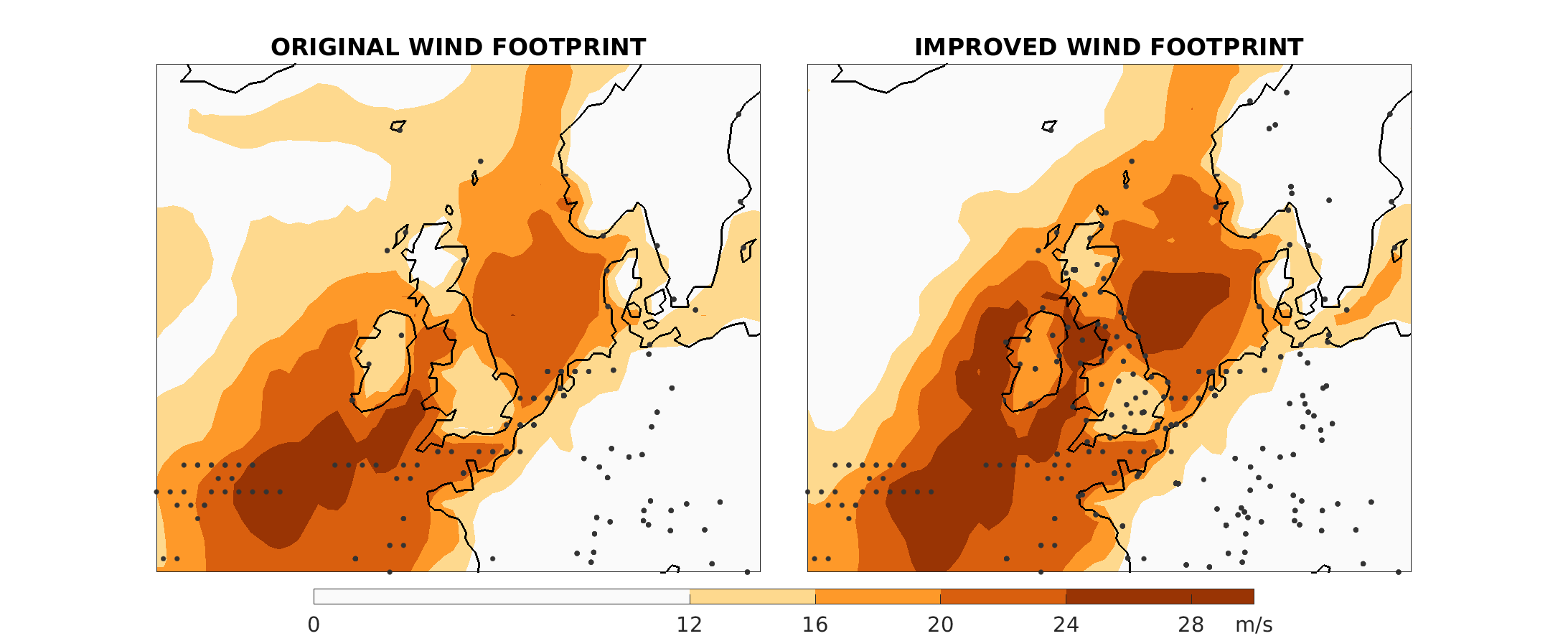On 27th February 1903 a major windstorm hit the UK and Ireland, known as Storm Ulysses.
The 20th Century Reanalysis (20CRv3) includes a modern reconstruction of the storm, created by assimilating available observations of surface pressure into a state-of-the-art weather forecast model.
There is a problem however. The number of available observations over north-west Europe is limited as most have never been digitised from the original hand-written paper sources. Recently, the WeatherRescue.org project rescued millions of observations, allowing us to examine the value of this new data by rerunning 20CRv3 with the new data added.
The animation below shows Storm Ulysses in the original version of 20CRv3 (left) and an improved version (right) with added observations (black dots). The contours are of sea level pressure and the colours are the wind speed at 10m, with blue arrows showing the wind vectors. The new rescued observations have reduced the minimum pressure, which is also simulated with more confidence.
But, is this an improvement? The wind ‘footprint’* for Storm Ulysses shows an increase in simulated wind speed when adding the new pressure observations, and this is now a far more credible simulation given the known damage that occurred during this storm (also see this photo).
* This figure shows the maximum wind speed from the 3-hourly simulated data so is probably an underestimate of the maximum sustained wind speed.

